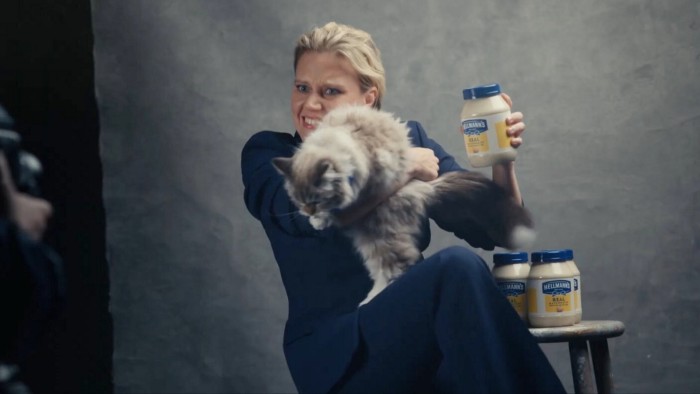Unlock the Editor’s Digest for free
Roula Khalaf, Editor of the FT, selects her favourite stories in this weekly newsletter.
WPP is the ad agency behind the Mayo Cat, a bow tie-wearing feline that advises shoppers to douse leftover food in Hellmann’s mayonnaise. Sadly, there’s no similar trick for livening up the company’s own prospects. After chief executive Mark Read quit on Monday, WPP should lose no time in hanging a “for sale” sign outside the door.
WPP has shed half its market value over the past seven years. Read’s efforts to streamline the company’s structure and integrate its functions may have protected profitability. But neither that, nor WPP’s investment in artificial intelligence to generate ads, have so far delivered much growth. This year, sales are expected to be flat to negative; France’s Publicis is targeting 4-5 per cent growth.
For WPP believers, a turnaround that enables the business to continue in its current form is still possible. It may well be true, for instance, that clients value an integrated approach, where the same company thinks up, produces and places their ads. And WPP has oodles of creative talent, production companies, the world’s largest media-buying business and new AI capabilities. The hope here is that Read has done some of the heavy lifting and a new boss could crunch the group down still further.
Yet the odds are lengthening on this happening. For one thing, Read will continue to run WPP until the end of the year, which suggests that it may tread water until then. And then investors would need to wait for a new boss to come in, bed down and start wielding the axe before things start looking up.
Meanwhile, companies such as Meta Platforms are redrawing the advertising landscape, with AI tools that can generate ads and place them on its platforms. While such a product may initially be more attractive to smaller enterprises rather than to WPP’s big, global clients that will be keen to keep a coherent brand message across platforms, it is nonetheless indicative of the direction of travel. At the very least, it will increase competition and drive down prices.

WPP’s share price has dropped so low as to make any offer for the whole or parts of the business hard to turn down. Its enterprise value is now in the region of £9.3bn. The group’s media business, formerly known as GroupM, may be worth roughly that if valued in line with Publicis, which trades at 9.6 times operating profit. By that reckoning, a buyer would get the rest of WPP’s business — which includes brands such as Grey, Ogilvy, and Hill and Knowlton, and generates about 40 per cent of operating profit — for free.
True, advertising is already a concentrated business, but the economics of a break-up are starting to look compelling. Read’s resignation could pave the way for a brave bidder to take its chance. To the extent that his exit is related to the industry disruption caused by AI, the technology may — indirectly — provide WPP’s shareholders with some enhancements.
